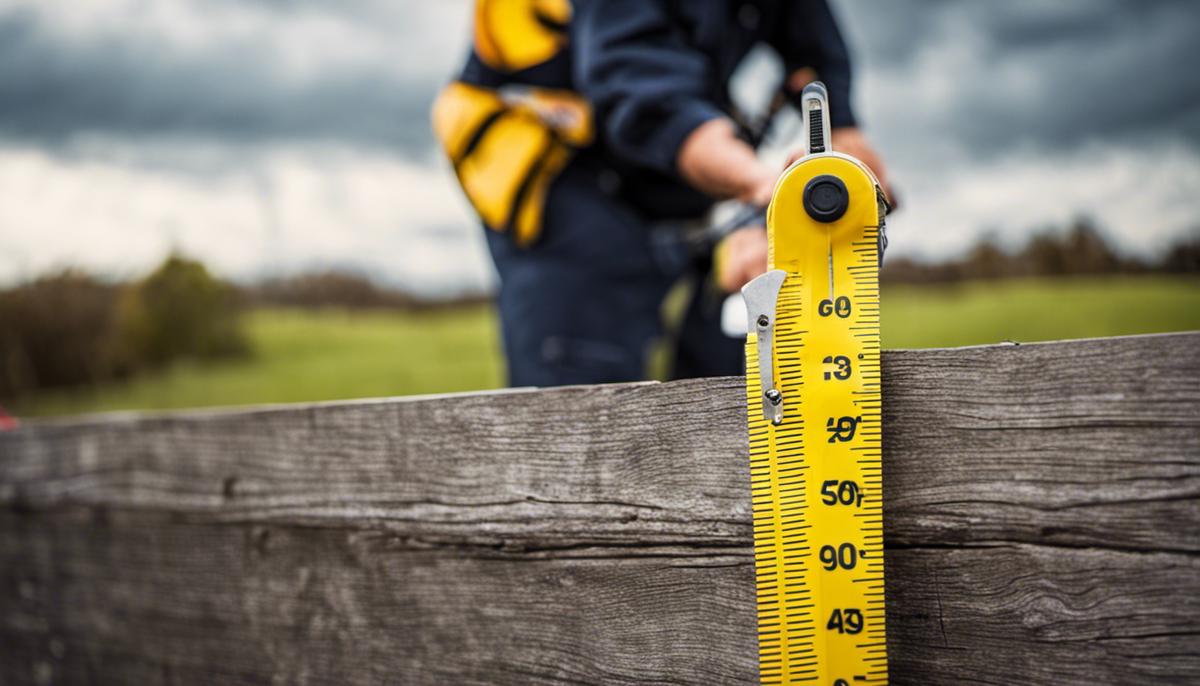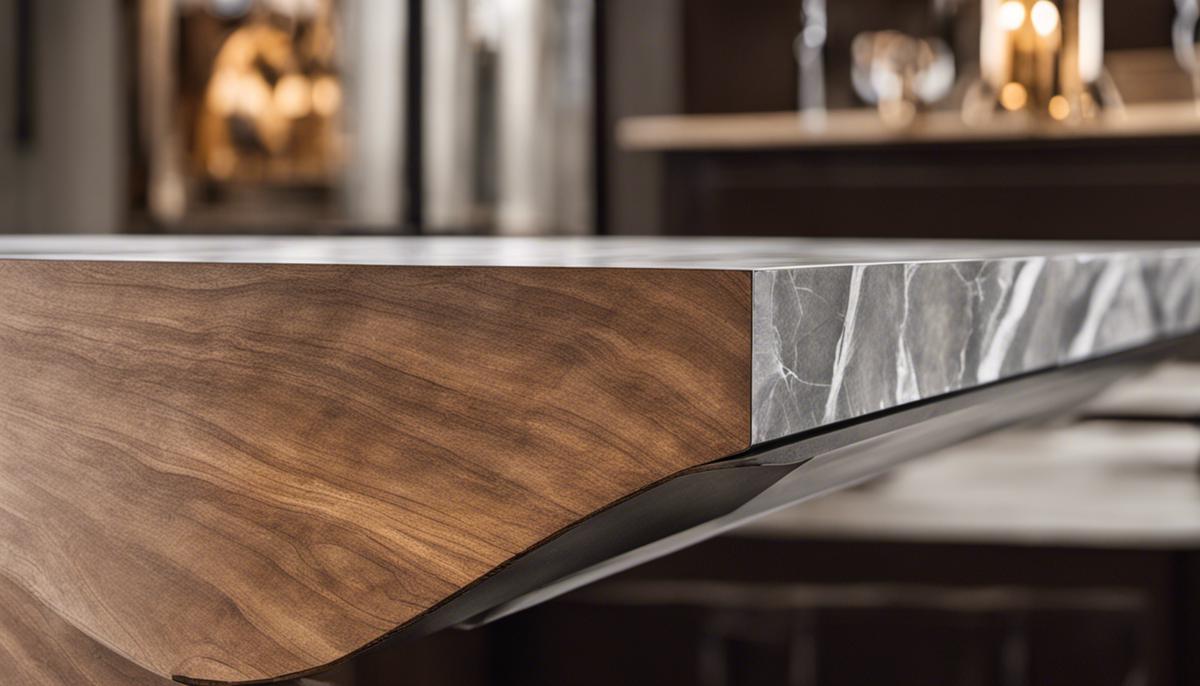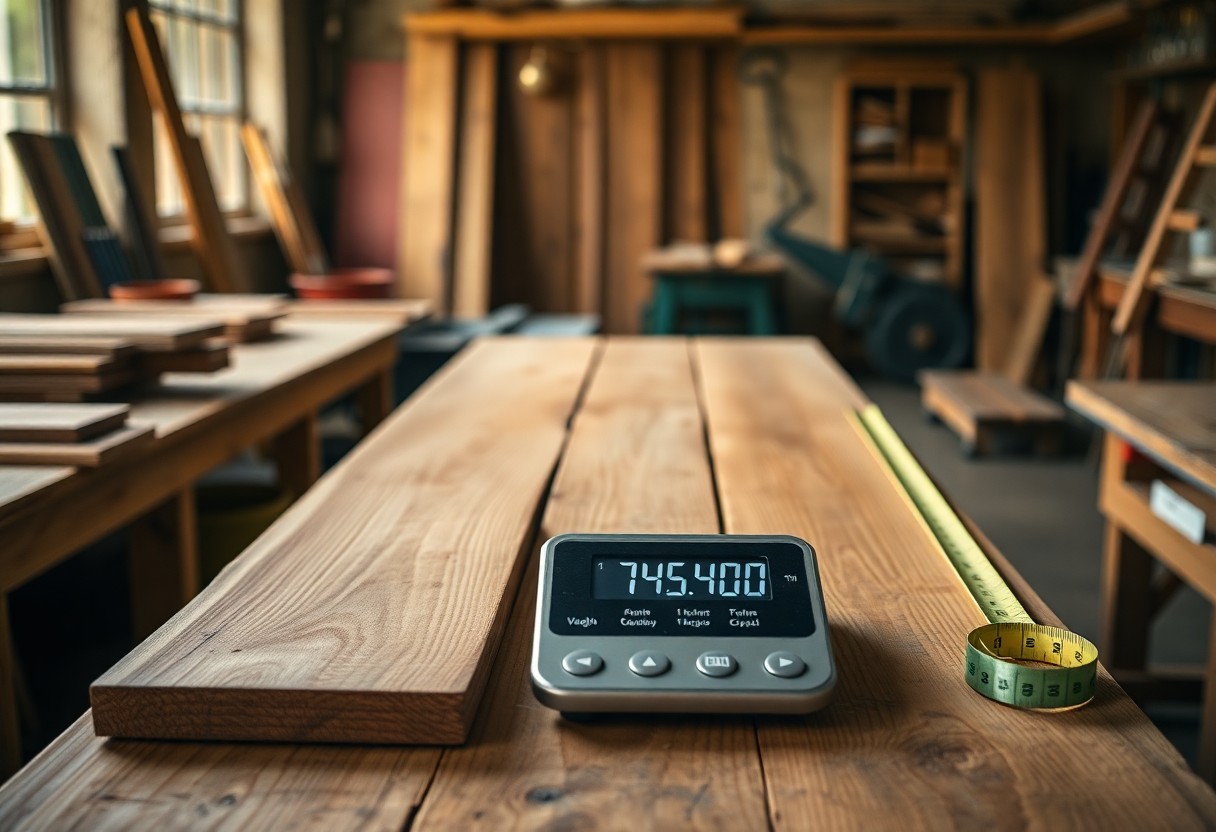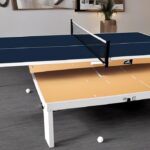Oftentimes, the beauty of a thing lies not just in its final form but also in the details of its creation. One such detail is the delicate art of polishing concrete.
Concrete, a versatile and robust material, has transcended its traditional uses and is now a popular choice for crafting chic and durable tabletops.
However, the success of such a venture hinges on understanding the nuances of the material and mastering the fine points of the polishing process. Like any craft, it requires a blend of theoretical knowledge and practical expertise.
This entails learning about the properties of concrete, understanding the principles of concrete polishing, familiarizing oneself with the necessary tools, and observing the essential safety measures involved.
A concrete table top is a durable and stylish surface made by pouring and shaping concrete into a tabletop form. It offers a modern and industrial look for various indoor and outdoor settings.
Concrete Table Top : A Comparison Table
| Aspect | Wet Polishing | Dry Polishing |
|---|---|---|
| Water Usage | Requires water for cooling and dust control. | Minimal or no water used; can be a dry process. |
| Dust Control | Effective at controlling dust due to water use. | May generate more dust, requiring additional dust collection measures. |
| Equipment | Typically uses a wet polisher with a water feed. | Uses dry polishing equipment like grinders and polishing pads. |
| Process | Slurry is created during polishing, which needs to be managed. | Generates less mess but still requires dust containment. |
| Time Efficiency | Can be faster due to the cooling effect of water. | May take slightly longer due to dust management and slower polishing. |
| Finish | Can result in a smoother, glossy finish. | Generally achieves a matte or satin finish. |
| Residue Cleanup | Requires cleaning and disposing of slurry residue. | Easier cleanup; mainly involves dust removal. |
| Tool Maintenance | More frequent maintenance due to exposure to water. | Less frequent maintenance as tools stay dry. |
| Environment | More water usage can be less eco-friendly. | Potentially more eco-friendly due to less water consumption. |
| Suitability | Ideal for achieving a high-gloss finish on concrete. | Suitable for achieving a matte or satin finish. |
| Safety Considerations | Slippery conditions may occur due to water. | Dust inhalation and eye protection are crucial. |
Material Insight: A Comprehensive Guide
| Aspect | Concrete Table Top |
|---|---|
| Material Type | Concrete |
| Strength | Durable and strong, ideal for heavy use. |
| Appearance | Versatile, can mimic various textures and colors. |
| Customization | Can be molded into various shapes and sizes. |
| Weight | Heavy; may require proper support. |
| Maintenance | Requires sealing to prevent staining and water absorption. |
| Installation | Requires skilled labor for proper pouring and finishing. |
| Cost | Moderate to high, depending on design and finish. |
| Durability | Long-lasting but may chip or crack over time. |
| Heat Resistance | Resistant to heat but can discolor with prolonged exposure. |
| Versatility | Suitable for indoor and outdoor use. |
| Care Instructions | Clean with mild soap and water; reseal periodically. |
Concrete: More Than Just a Building Material
Concrete is widely recognized as a practical and adaptable construction material.
This reputation stems from its inherent qualities: concrete is durable, strong, weather-resistant, and easily moldable into various shapes.
However, beyond its fundamental utility, this versatile material has gained popularity for its aesthetic applications.
One notable example is concrete tabletops, which have become increasingly sought after for the natural, rugged beauty they can add to a home.
Understanding Concrete Properties
Concrete is primarily composed of cement, water, and aggregates such as sand and gravel. As the cement hydrates, it binds the aggregates together, imparting strength to the concrete.
Despite its seemingly simple composition, the final product’s performance can vary based on the ratio of these materials and the types of aggregates employed.
Concrete, in general, possesses remarkable strength, enabling it to withstand heavy weight and pressure.
However, it’s crucial to note that when used in countertops, concrete must be reinforced with steel to prevent cracking or breaking.
One distinctive physical property of concrete is its porous nature, which allows it to absorb liquids, potentially causing staining over time. To counteract this, a sealant is often applied to protect the surface and preserve its visual appeal.
Keep in mind, though, that sealants require periodic maintenance to remain effective.
Advantages of Concrete Tabletops
Concrete tabletops exude a raw, earthy beauty that can add character to any space. Since they are custom-made, they can take any shape, size, and color to perfectly match your interior design needs.
You can also incorporate elements into the concrete before it sets, such as pebbles, tiles, or even glow-in-the-dark aggregates, making your tabletop truly one-of-a-kind.
Disadvantages of Concrete Tabletops
Despite its many advantages, concrete tabletops also have their drawbacks. Due to their weight, additional support or bracing might be necessary for your base furniture.
As mentioned earlier, concrete is porous and needs to be sealed appropriately to avoid staining and water damage.
Changes in temperature, movement, and prolonged exposure to heavy loads can lead to cracking over time as well. Improper handling and maintenance can also result in chipping and surface wear.
Understanding these specificities of concrete is vital to ensure the longevity of your concrete tabletop. While it may seem like a challenging material to work with, a bit of knowledge and care can help you create and maintain a beautiful, personal piece for your home.
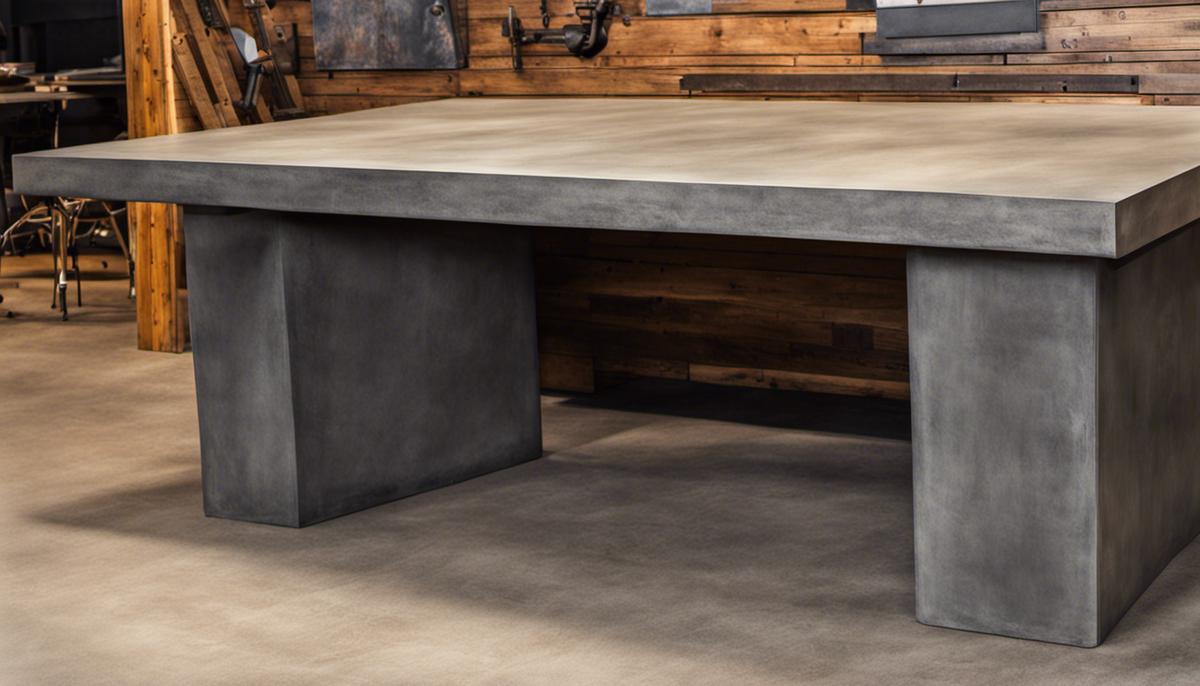
Concrete Polishing Basics
| Aspect | Dry Polishing | Wet Polishing |
|---|---|---|
| Method | Uses diamond abrasives without water. | Uses diamond abrasives with water as a lubricant. |
| Dust Control | Generates a significant amount of dust; requires dust extraction systems. | Minimizes dust due to water, making it a cleaner process. |
| Equipment | Typically uses dry polishers or grinders. | Requires wet polishers or grinders with water tanks. |
| Cooling | May overheat the concrete surface if not careful; less effective cooling. | Efficiently cools the surface, preventing overheating. |
| Surface Quality | May produce fine scratches if not done carefully. | Generally provides a smoother and shinier finish. |
| Cost | Generally more affordable due to less specialized equipment. | Equipment and water costs may be higher. |
| Speed | Often faster as there’s no water involved. | Slower due to the need for water and multiple passes. |
| Noise Level | Tends to be noisier due to the absence of water for sound dampening. | Quieter due to the water’s noise-reducing effect. |
| Safety | Requires proper dust masks and eye protection due to dust exposure. | Still requires dust protection but with reduced dust exposure. |
| Resin Bonding | May be challenging to achieve proper resin bonding without water. | Provides better resin bonding due to the wet surface. |
| Environment | Generates more airborne dust pollutants. | Minimizes airborne dust, which is more eco-friendly. |
| Common Applications | Often used for heavy-duty polishing and grinding. | Suitable for various applications, including residential settings. |
The Basics of Concrete Polishing
Polishing a concrete tabletop can transform it from a rough and industrial surface to a smooth, modern gloss that adds an aesthetic touch to your space.
To effectively complete this project, understanding the basic principles of concrete polishing is essential.
The process involves several stages, beginning with grinding the concrete, then honing it, and finally polishing it to achieve a shining surface.
You also need to be familiar with the appropriate tools required for this job and the specific safety measures to consider.
Choosing the Right Tools
| Aspect | Tool | Description |
|---|---|---|
| Surface Size | Handheld Grinder | Suitable for small areas or spot polishing. |
| Walk-Behind Grinder | Ideal for larger surface areas. | |
| Surface Condition | Diamond Cup Wheel | For initial coarse grinding on rough surfaces. |
| Diamond Polishing Pads | For fine polishing on smoother surfaces. | |
| Speed & Control | Variable Speed Grinder | Allows control over grinding speed. |
| Dust Management | Dust Shroud and Vacuum | Essential for minimizing dust exposure. |
| Edge Polishing | Handheld Edge Grinder | For polishing edges and corners. |
| Accessories | Polishing Chemicals | May include densifiers, sealers, and stain removers. |
| Safety Gear | Protective equipment like goggles, respirators, and gloves. | |
| Budget & Expertise | DIY Kits | All-in-one kits for beginners. |
| Professional Machines | High-performance tools for experts. |
To polish a concrete tabletop, you will need a set of specific tools.
These tools include a heavy-duty polishing machine known as a concrete grinder, diamond-impregnated disks for grinding and polishing, a dust mask, safety glasses, gloves, and a vacuum to control dust.
The diamond-impregnated disks are available in various grit levels, which you will use in different stages. Coarse grits (ranging from 30 to 80 grit) are ideal for the initial grinding stage, medium grits (from 100 to 200 grit) are used during the honing stage, and finer grits (ranging from 400 to 3000) are employed for the final polishing stage.
The Concrete Polishing Process
The concrete polishing process begins with grinding the concrete surface using a coarse grit. Move the grinder across the surface in overlapping paths until all desired roughness has been removed.
Make sure not to miss any spots during this stage, as they can create uneven surfaces or visible flaws on your tabletop.
Next is the honing stage. This entails using a medium-grit disk to refine the concrete surface, removing any remaining scratches and providing a much smoother finish.
In the final stage, attach a fine-grit disk to the grinder and go over the entire surface again. This polishing phase brings out the natural shine in the concrete. For a super glossy finish, you can go up to a 3000-grit disk.
Safety Measures While Polishing Concrete
When polishing concrete, safety must be a top priority. Concrete dust can be harmful when inhaled, so it’s crucial to wear a dust mask, safety glasses, and gloves at all times during the process.
Ensure that your workspace is well-ventilated. Additionally, exercise caution when operating the heavy concrete grinder machine, making sure it is used safely and under control.
In conclusion
Polishing a concrete tabletop requires attention to detail and patience at each stage of the process.
By understanding these basic principles, selecting appropriate tools, and following strict safety measures, you can transform a plain concrete surface into a beautifully polished piece

Hands-On Learning
Gathering Your Materials
To start practicing your concrete polishing skills, gather the required materials.
These should include a small piece of concrete, a 4-inch grinder with diamond pads, a set of polishing pads ranging from 50 to 3,000 grit, a dust mask, safety glasses, and gloves to protect your hands.
Additionally, ensure you have a bucket of clean water for wet polishing and some dry microfiber cloths for buffing the surface when you’re finished.
Understanding the Process
Concrete polishing is not a quick-fix solution; it is a process that demands time, precision, and patience.
By employing various grits of diamond polishing pads, you will gradually grind down the concrete’s surface to eliminate imperfections and unveil a smooth, polished final product.
Safety Precautions
Once you have your materials, be sure to put on your safety gear.
This should include a dust mask, safety glasses, and gloves.
Before you begin, ensure that your work area is well-ventilated and kept away from any flammable substances; concrete dust is highly combustible.
Using the Grinder
Start by attaching the 50-grit diamond pad to your 4-inch grinder.
Turn the grinder on and carefully guide it over the surface of the concrete, making sure to keep the grinder flat against the surface at all times.
Ensure that the surface remains wet to prevent the dust from becoming airborne.
Increasing Grit for Finer Finishes
After you’ve finished with the 50-grit pad, switch to a 100-grit pad and repeat the process.
Always keep the surface wet as you work and rinse the concrete after completing each grit. Continue this pattern, increasing the diamond grit with each successive pass, until you reach the final 3,000-grit pad.
Buffing and Sealing
After you’ve completed all the sanding steps, your concrete piece should have a pretty smooth and shiny surface.
Now, it’s time to buff it for an extra shine. Use a dry, clean microfiber cloth to gently buff the surface until you achieve your desired level of shine.
Finally, consider applying a concrete sealer to protect your polished concrete from stains and scratches.
Practicing Your Skills
Replicate the process on different pieces of concrete to refine your skills.
As you become more confident in your work, gradually progress to larger surfaces.
Remember
Like with any hands-on skill, polishing concrete takes practice, patience, and precision. Implement the steps carefully, and you’ll soon be ready to polish your concrete tabletop.
Rewards are significant for your efforts, as polished concrete offers a sleek and modern aesthetic that adds charm and character to any space.
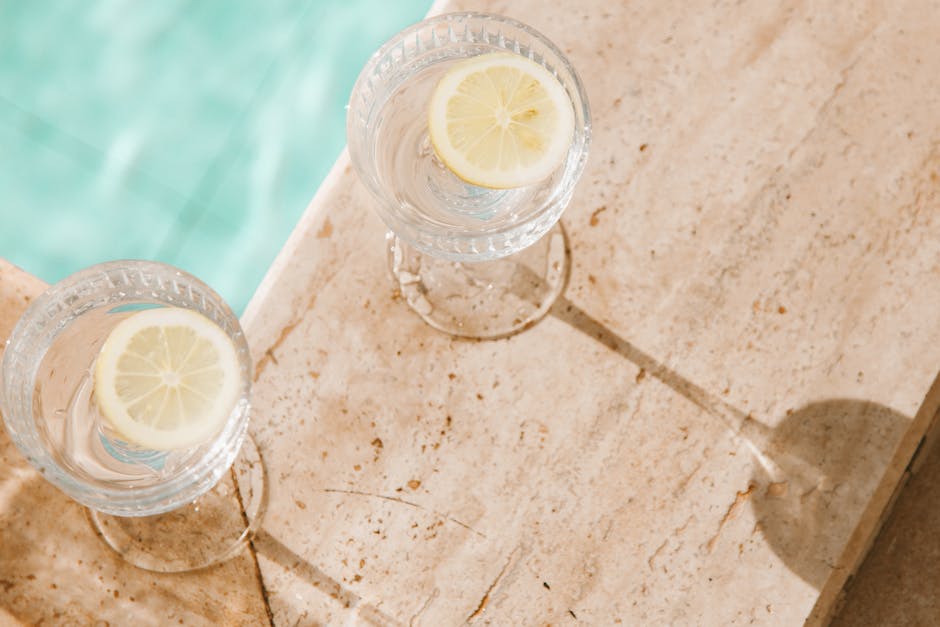
Indeed, the journey of transforming a plain piece of concrete into an elegant tabletop is a masterful blend of art and science.
The path, though complex, becomes more navigable once we acquire a solid foundation in concrete knowledge, gain proficiency in polishing techniques, and gain hands-on experience.
It’s important to remember that while the techniques are fundamental, the real learning occurs through practical application, testing, and mastery on a small piece of concrete.
The destination is not just a polished tabletop but also a deeper understanding and appreciation for the intricate process involved in its creation.
Related Questions
What is concrete, and why is it commonly used for table tops?
Concrete is a versatile construction material made by mixing cement with aggregates like sand and gravel. It’s used for table tops due to its durability and design flexibility.
What is polishing, and how does it relate to concrete table tops?
Polishing is the process of refining a surface to create a smooth, glossy finish. It’s essential for achieving an attractive gloss finish on concrete table tops.
What exactly is a table top, and can it be made from concrete?
A table top is the flat surface of a table. Yes, table tops can be made from various materials, including concrete.
What is surface treatment, and why is it necessary for concrete table tops?
Surface treatment involves applying coatings or treatments to enhance appearance and durability. It’s crucial for protecting and beautifying concrete table tops.
What is a gloss finish, and how is it achieved on concrete table tops?
A gloss finish is a high-shine, reflective surface achieved through polishing and surface treatment processes, enhancing the aesthetic appeal of concrete table tops.
What is a sealant, and why is it applied to concrete table tops?
A sealant is a protective coating applied to concrete table tops to prevent staining, moisture damage, and deterioration, ensuring their longevity.
What is aggregate, and why is it a component of concrete?
Aggregate refers to materials like crushed stone, sand, or gravel mixed with cement to create concrete, providing strength and texture.
What are diamond polishing pads, and how are they used in concrete table top polishing?
Diamond polishing pads are abrasive tools used to remove imperfections and achieve a smooth finish on concrete table tops during the polishing process.
How can stains be used on concrete table tops, and what purpose do they serve?
Stains are pigments or dyes applied to concrete table tops to add color and enhance their aesthetic appeal, allowing for customization.
1What does maintenance involve for polished concrete table tops?
Maintenance includes regular care such as cleaning, resealing, and touch-ups to keep polished concrete table tops in optimal condition and extend their lifespan.


